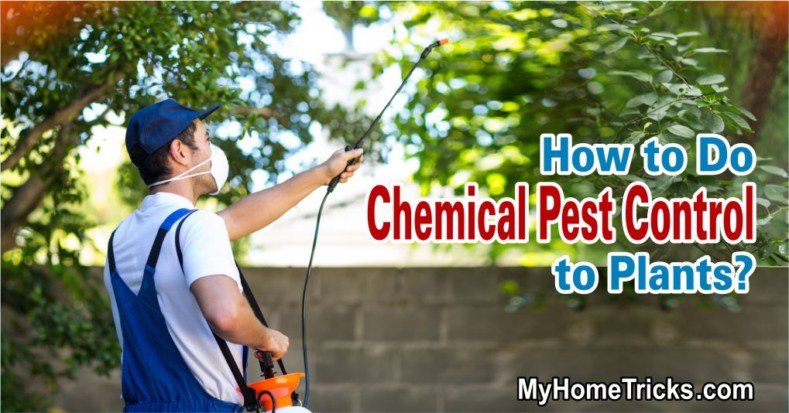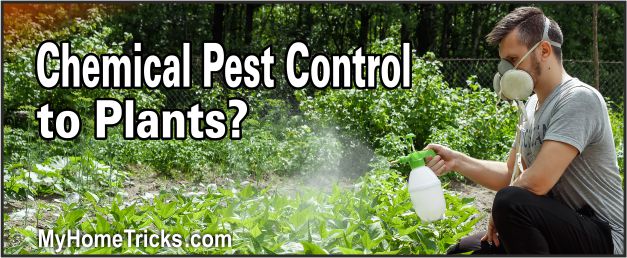Chemical Pest Control
“Chemical Pest Control” is one of the most effective methods of combating pests in your garden. However, unlike other methods, it requires careful implementation. The chemical pest control method helps to neutralize insects that damage agricultural crops, flowers, and other plants. To implement it safely, it is necessary to have useful information. Let’s start reviewing how to implement chemical pest control safely:
Provided that they are used safely, carefully, and never indiscriminately, chemical pest controls are a useful aid to trouble-free gardening. Well, how do we use chemical control safely?
Using Chemical Pest Control Safely
- Combining methods: Use chemicals only if they are absolutely necessary. Whenever possible, combine chemical controls with cultivation methods.
- Accurate choice: Choose the chemical that is most appropriate for a particular problem and follow the instructions carefully. Not all products are suitable for every type of plant.
- Checking the label: Always observe the stated precautions and restrictions.
- Protecting hands: Always use gloves when handling or mixing chemical concentrates.
- Avoiding contamination: Never eat, drink, or smoke when working with pesticides. Always wash your hands thoroughly after using them.
- Using chemicals safely: Avoid contact with the skin, and wash off any splashes immediately. Do not inhale any clouds of dust or sprays.
- Treated areas: Keep children and animals away from the area being treated. Most chemicals are considered safe once the foliage in the treated area is dry.
- Conditions for use: Do not spray or treat with pesticides on windy, gusty, or very hot days.
- Bee protection: If possible, spray at dusk to minimize the risk of pollinating insects, such as bees.
- Containers: After use, always thoroughly wash out containers used to apply chemicals.
- Labeling items clearly: Always label every piece of equipment used for applying pesticides. Never pour chemicals into other containers.
- Storage: Store pesticides in their original containers, and make sure they are tightly closed. Keep all pesticides in a safe place well out of the reach of animals and children.
Chemical Pest Control: Avoiding Damage
- Following instructions: All pesticides carry detailed instructions. Always apply the product at the precise rate and frequency stated. If used incorrectly, pesticides can damage both the plant and the environment.
Covering a Plant for Chemical Pest Control
Many pests and diseases, such as rose rust, lurk on the undersides of leaves. To ensure efficient coverage and control of the pest or pathogen, use a curved nozzle so that you can spray the undersides of the leaves as well as the upper surfaces.
Applying Chemical Pest Control
- Suitability: If you are uncertain about whether a particular chemical will cause an adverse reaction in a plant, test it first on a small area before treating the whole plant.
- Size of the spray: Choose a fine-droplet spray for controlling insects, since they are most likely to be killed by small droplets. Large droplets are more suitable for weed control.
- Ready-mixed chemicals: If you have only a minor problem or a small garden, buy ready-to-use commercial pesticides and fungicides in a spray bottle.
- Minimizing stress: Do not apply chemicals to young plants or plants under stress; they can be easily damaged.
- Shiny leaves: If you need to treat a plant that has shiny leaves, choose a product that contains a wetting agent. Without this, the chemicals will not adhere to the leaf surfaces and will not be effective.
- Discarding Chemicals and Leftover Solution: Always dispose of old leftover chemicals. Apply any excess to a suitable plant or dispose of it properly. Never pour unwanted chemicals down the toilet or sink, or into bodies of water.
Resistance to Chemicals
- Resistance Problem: More and more pests and pathogens are becoming resistant to chemicals – spider mites and greenhouse whitefly, for example. Some thrips and aphids are also now resistant to common pesticides of chemical pest control.
- Changing Products: Reduce the likelihood of resistance by using pesticides only when really necessary and by changing the product from time to time. Some fungi are resistant to specific fungicides. Choose an alternative Chemical Pest Control product.
Tip: For more information on Chemical Pest Control, which we have discussed in general terms, you may click on the “tags” below.







